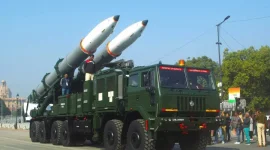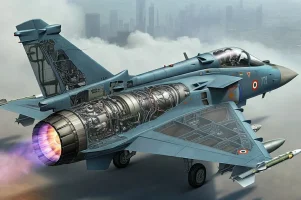- Views: 1K
- Replies: 16

With uncertainties surrounding the indigenous Twin Engine Deck-Based Fighter (TEDBF) program, the Indian Navy is close to finalizing a deal for 26 Dassault Rafale M (Marine) aircraft to meet its urgent carrier-based operational requirements.
This acquisition is crucial for bolstering the Navy's capabilities aboard its aircraft carriers, INS Vikramaditya and INS Vikrant, which currently operate the MiG-29K, a fighter increasingly seen as inadequate for modern naval aviation.
The TEDBF program, spearheaded by the Aeronautical Development Agency (ADA), was envisioned as a successor to the MiG-29K and a key step towards self-reliance in advanced fighter technologies. However, significant delays, including an incomplete Critical Design Review (CDR), have cast doubt on the program's ability to meet its initial timeline.
These delays raise concerns that the Indian Navy may lose patience with the indigenous effort, potentially mirroring the fate of the LCA Navy MkII program, which was shelved without producing a prototype.
In contrast, the Rafale M, currently in service with the French Navy, represents a proven and immediately available solution. Its compatibility with the ski-jump configuration of Indian carriers has been demonstrated through successful trials aboard the INS Vikrant.
The potential for additional Rafale M orders beyond the initial 26 aircraft is high, especially if the TEDBF program continues to face setbacks. This could lead to the Navy opting for incremental purchases of the Rafale M, effectively sidelining the indigenous program.
A Difficult Balancing Act
The Indian Navy faces a difficult decision. While the Rafale M offers a proven and readily available solution to meet immediate operational needs, prioritizing the indigenous TEDBF program could yield long-term benefits, including technological advancement and reduced reliance on foreign suppliers.Also, abandoning the TEDBF program would be a setback for India's "Atmanirbhar Bharat" (self-reliant India) initiative. Over-reliance on foreign platforms like the Rafale M could also expose the Navy to supply chain vulnerabilities and cost escalations.



